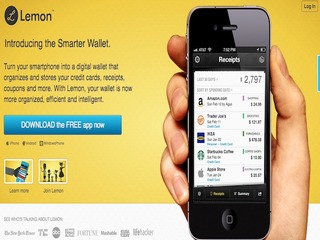
Starbucks and Square: Why it's such a big damn deal
Our dreams of a cashless, cardless future are coming true

I’m so in love with the possibility of being able to pay exclusively with my iPhone someday that I get a little rush every time I see a food truck or a farmer’s market stand with a little sticker that says it accepts Square payments. Huzzah! We’re on our way! And then the inevitable disappointment sets in when I realize that I will never eat off of enough food trucks to be able to go through life paying for everything with my phone.
The announcement today about the new partnership between Square and Starbucks is huge—not just for Square and the bounty of new possibilities for its business (although that, in itself, is pretty huge too)—but for what this means for the future of the digital wallet. With the addition of a major global brand like Starbucks, Square not only has a clear pathway to international expansion, but a lot more notoriety—and a case study for other major brands who aren’t yet sure about signing on to mobile payments from digital wallets.
And as long as those major brands remain outside of Square’s dominion, its efforts at developing the digital wallet of the future simply won’t pan out. As a consumer, I can download Square’s Card Case app and hope that someday one of my favorite local cafés begins accepting Square payments, but barring that, I just have to sit and wait. And it’s not like I can get proactive since I have to add a merchant to my Card Case before I can use it—which means if I end up stumbling across a cool shop, I can’t pay with Square unless I add it to my Card Case—which takes more work than simply whipping out my credit card and thus totally defeats the purpose of downloading Square’s Card Case app in the first place.
So why is this such a big deal? Because with Starbucks onboard, other major brands are likely to join the movement, which means that I—little suburban work-at-home Suzy—can look forward to adding the big box retailers that make up my whole middle-class shopping experience, in addition to the handful of merchants I patronize at the farmer’s market. Starbucks will bring more attention to Square, which will attract more mobile users, which will, in turn, attract more merchants.
What’s even more interesting about this whole partnership is that of all the major brands around the globe, Starbucks is arguably the last one that needed help from Square. Starbucks already operates one of the most successful and far-flung cashless and cardless mobile payment apps in the world, with some one million people paying with the Starbucks app every day. With the Starbucks app, you can already walk into any Starbucks and pay easy-peasy with your phone.
So it makes sense that Starbucks not only partnered with Square, but also invested $25 million in the mobile payment company, which allowed CEO Howard Schultz to snag a seat on the company’s board of directors. Starbucks isn’t just looking for an easy mobile payment system; it sees an opportunity to be the driver that moves the whole mobile payments industry forward.
Gartner predicts that by 2016, mobile payments will reach $617 billion worldwide, up from $105 billion last year. By that point, Gartner forecasts that smartphones will account for two-thirds of all phones.
“Those of us who frequent Starbucks know that their employees work hard to get us through the line quickly, even with each order uniquely customized. Many baristas even know the preferred beverages of their most loyal customers,” writes Forrester analyst Denée Carrington. “This type of customer recognition, embedded loyalty, and faster checkout is what Square enables for its existing merchants. If the Square/Starbucks duo can successfully deliver a more convenient, contextually relevant, and compelling experience, then consumers will look forward to using the Pay With Square digital wallet at Starbucks and with their other favorite merchants. It also will set a new a standard for the type of compelling experience that consumers will know is possible and will come to expect when using a mobile digital wallet.”
The switch to new payment systems has always been scary and slow to move forward, from the time the colonies began issuing paper money in the 18th century to today's e-commerce and one-click pay settings. But at some point, ease and convenience trump fear.
Related News


Mobile payments to pass $171B in 2012

Starbucks to accept Square payments in 7,000 US spots

Starbucks rolls out new mobile payment system

